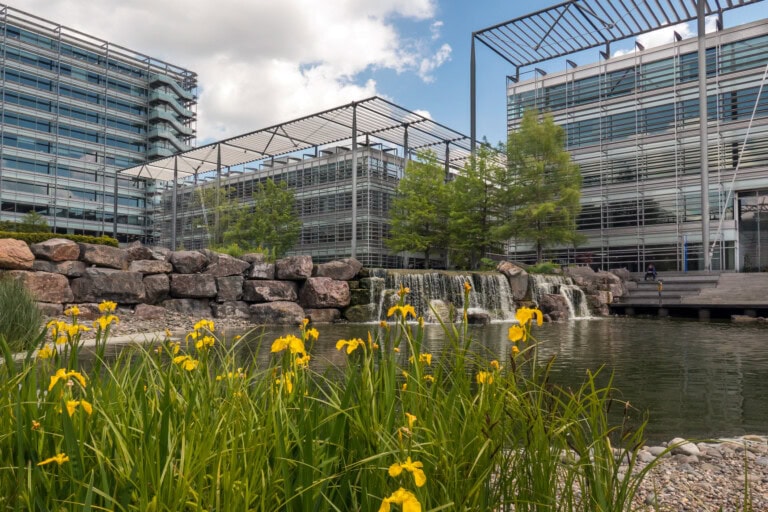How time-matching and location-based energy procurement reduces emissions while improving Scope 2 reporting

As companies navigate increasing regulation and their own net zero goals, there’s a growing focus on the origin and traceability of energy in procurement. The status quo in energy procurement involves purchasing energy from a retail supplier without considering the source of the generation. This has recently given way to an expectation of granularity and transparency on when and where energy is generated and consumed.
This is in part driven by regulation requiring reporting based on the Greenhouse Gas Protocol’s (GHGP) Scope 2 guidance on location-based accounting. It’s also driven by an increase in companies’ commitments to ambitious net zero goals, such as 24/7 Carbon Free Energy (CFE), and the methods for meeting those goals.
As a result, the importance of, and demands on, time-matching and location-based energy procurement has grown.
How does time-matching impact the quality of renewable energy procurement?
Historically, companies procuring renewable energy focused on “100% annual matching”: buying enough credits from in-country solar and wind farms to offset their annual energy use from local grids.
While this method led to progress in renewables procurement, such aggregation limits the ability to reduce CO2 emissions associated with electricity consumption. Addressing this led to the higher-quality practice of time-matching: matching electricity consumed at a particular site with renewable energy generation at an hourly, or sub-hourly, resolution.
As an example, consider a distribution warehouse’s load over 24 hours, with a daytime peak:

Now say the owner of the warehouse installs on-site solar, with the tenant procuring the generated energy through a power purchase agreement (PPA):

The blue bars show solar energy generated during daylight hours. The grey bars are time frames where more energy is generated than the warehouse needs. Gaps between the blue bars and the dotted red line are time frames when the warehouse pulls energy from the local grid.
By matching time of energy demand to time of generation, the “time-matched percentage” or CFE of a particular site can be determined with high confidence.
This allows for better downstream procurement decisions, like installing an on-site battery to utilise over-generation, or procuring wind energy, to get closer to 100% CFE and avoid grid consumption.
What is the role of location-based procurement?
In GHGP’s Scope 2 guidance, companies can measure indirect emissions associated with electricity consumption using a location-based method. This method multiplies an average regional emissions factor by the amount of electricity consumed in that region.
As location-based reporting becomes more accurate, it’s anticipated that the “regional” definition will become more narrowly specific, and reporting will require knowledge of, and accounting for, the emissions intensity of the specific generation location.
Additionally, the transmission and distribution losses associated with long-range energy distribution – say, from a distant solar farm to a distribution warehouse – has an impact on Scope 2 and 3 emissions, increasing the importance of local generation to minimise impact.
It’s important to note that consuming energy generated close to demand has additional benefits:
- Lower cost overhead: Short range transmission and distribution is cheaper, avoiding significant usage of grid infrastructure.
- Improved grid stability: More intermittent and distributed generation entering the grid increases congestion. Consuming energy near its generation reduces grid strain.
- Expanded grid capacity: Generation that serves local demand and reduces peak consumption reduces the transmission import capacity to industrial parks and other load centres. Local renewable generation can serve 50%+ of industrial park needs as an electrified economy.

Driving for time-matched, location-based procurement
A key challenge of both time-matched and location-based procurement is measurement for decision-making and traceability. Time-matching requires visibility not only of hourly demand, but also of the forecasted shape of procured renewable energy to match it.
Location-based procurement requires both the availability of local renewable energy, as well as transparency of the location of said energy generation from the supplier. Supply is challenging due to the inherent variability of wind and solar, the regional variations of where the sun shines or wind blows, and varied policy and market mechanisms and limitations.
While traditional energy retailers are taking steps to expose data to their customers, including the usage of smart meters, the distributed nature of renewable energy generation and procurement requires a differentiated approach.
To ultimately reach their regulatory and net zero goals, customers must find local solutions that:
- Meet their demand with time and location “stamped” energy, where each unit of delivered energy can be traced to an exact generation time and location.
- Offer verified, clean energy production on the grid point for each site, based on the local grid resource mix.
- Offer power generation shapes that meet the shape of unmet demand, with reliable forecasting for sound procurement decisions.
As the regulatory and net zero landscape shifts, the expectations of quality in renewables procurement are higher than ever. Companies will buy the highest quality energy they can access – and that increasingly means the closest energy that matches their specific hourly demand.

Author: Noaa Cohn, VP Product, InRange
Website: https://inrange.io [can we UTM this?]
LinkedIn: https://www.linkedin.com/in/navital/
Twitter: @noaacohn
Related
Sustainable Construction for the Sustainable Development Goals

What is Operational Carbon in buildings?

Full Transparency: Scope 3 emissions and Project Portfolio Disclosure

The Importance of Upskilling on Whole Life Carbon Assessments


